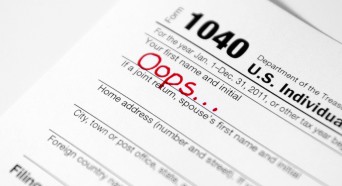 BY CANDY PARKER
BY CANDY PARKER
Lesbian.com
While it’s said that taxes are one of only two things in life of which we can be certain, an associated inevitability are the mistakes made by taxpayers each year when filing their returns. Many errors result from ignorance, some from carelessness, while others are just plain stupid. To ensure your return is trouble-free and your refund prompt, review your filing package against this list of the most common tax-filing blunders.
1. Missing/incorrect social security numbers
The IRS used to include your social security number on the pre-printed label provided with your tax package; however, this practice was discontinued due to privacy concerns. So be sure to enter your nine-digit identifier accurately to avoid processing delays and possible disallowance of tax credits.
2. Wrong filing status
If you’re single, check the criteria for filing as Head of Household. If you pay more than 50 percent of the household costs for a dependant child or parent, you may qualify for Head of Household filing status, a money saver when the time comes to compute your tax.
3. Math/computation errors
Each year thousands of taxpayers receive correction notices from the IRS due to bad math or inconsistent computations between the 1040 and supporting forms. In the best scenario, these errors delay any potential refund. In the worst, they can result in an unwelcome surprise in the form of additional tax due. Put some new batteries in the calculator and check your math carefully when reviewing your tax return.
4. Wrong tax table
With so many figures jammed so closely together, it can be easy to lose your place when determining your total tax amount. In this case, disorientation can be costly. Keep your focus when matching your income range to your filing status and use the correct column when referencing the tax table.
5. Inaccurate direct deposit information
The good news is that your refund can find its way into your bank account faster than ever thanks to the IRS’s direct deposit option (Form 8888). The bad news is that entering the wrong account or routing numbers could cause your refund to be lost entirely. This is a situation where an ounce of prevention is worth far more than a pound of cure — verify your bank information carefully.
6. Failing to sign the return
An unsigned return is an invalid return. Avoid potential delays or late filing penalties by ensuring your John Hancock is affixed prior to finalizing your tax package.
7. Using the IRS as a savings account
You’ve completed your return and are due a hefty refund – is this cause for celebration or sorrow? It’s great to know you don’t owe any tax, but having too much withheld throughout the year is not a sound approach to savings. The IRS doesn’t pay interest on over-payments, so lower your withholdings and invest your extra take-home pay.
8. Failing to file if you owe money
Perhaps one of the more costly errors you can make as a taxpayer is not filing your return because you don’t have the money to pay. The IRS assesses penalties separately for both failure to file and non-payment, so tender your tax return on time to avoid unnecessary penalties. Contact the IRS right away to let them know you can’t pay the amount due and explore payment options. As the IRS assesses interest on the unpaid tax, remit whatever amount you can afford when you file your return.
9. Missing the deadline
With the glut of tax preparation-related commercials and reminders in the form of grousing by friends and family regarding the dreaded April 15th deadline, it’s hard to believe that anyone could miss the filing date, but each year many taxpayers do. If you can’t meet the April 15th deadline, request an automatic six-month extension by filing Form 4868 to avoid costly failure to file penalties and interest charges.
All referenced IRS forms and other taxpayer tips are available at the official IRS website.






